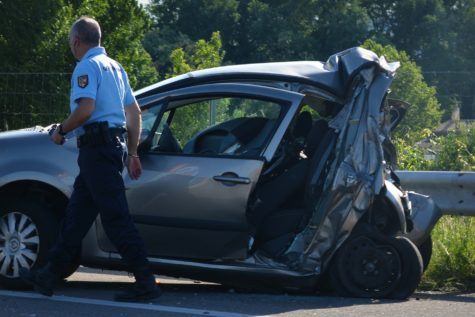NEW HYDE PARK, N.Y. — A troubling new study finds not wearing a seatbelt is to blame for the majority of car accident-related spinal fractures. Researchers report two thirds of all spinal fractures among children, especially in adolescents, occur during traffic crashes.
“Over 60 percent of pediatric spinal fractures occur in children ages 15 to 17, coinciding with the beginning of legal driving,” Dr. Vishal Sarwahi, MD, of Cohen Children’s Medical Center, and his colleagues write in a media release.
With these unsettling stats in mind, study authors stress the importance of more robust awareness campaigns that remind young drivers to wear their seatbelts. Motor vehicle accidents (MVAs) are already the number one cause of death among U.S. teens. Now, this research finds MVAs are also responsible for the majority of spinal fractures among youths.
Driving inexperience and no seatbelts are a dangerous combination
Study authors analyzed a total of 34,563 pediatric patients who suffered spinal fractures between 2009 and 2014. Many individuals sustained more than one fracture. In all the report included 45,430 fractured vertebrae.
Teens between 15 and 17 years-old accounted for about 63 percent of these spinal fractures, with two-thirds occurring during MVAs. Perhaps predictably, young drivers are most at risk of suffering a spinal fracture just after getting their driver’s license. For what it’s worth, 58 percent of those injured were male, and more accidents tended to occur in the South.
“Nearly two-thirds of pediatric spinal fractures sustained in MVAs occurred in children who did not use belts,” Dr. Sarwahi and co-authors write.
Riding in a car without a seatbelt increases risk of serious injury exponentially. For instance, death rates more than double (29.3% to 70.7%). Meanwhile, taking just a few extra seconds to put on a seatbelt can greatly reduce those risks. Seat belt use lowered the risk of death by more than 20 percent, and seatbelts were also linked to lower rates of multiple vertebral fractures among adolescents.
On the bright side, more young drivers are consistently wear seatbelts today than a few decades ago. Still, researchers say there’s room for major improvement. They recommend finding new ways to connect with young people about seatbelts via technology and media. Study authors also stress the importance of normalizing seatbelt use from a cultural and societal perspective.
“Ensuring our new, young drivers wear protective devices can greatly reduce morbidity/mortality associated with MVA and can help save lives, and spines,” researchers conclude.
The study appears in the journal Spine.
